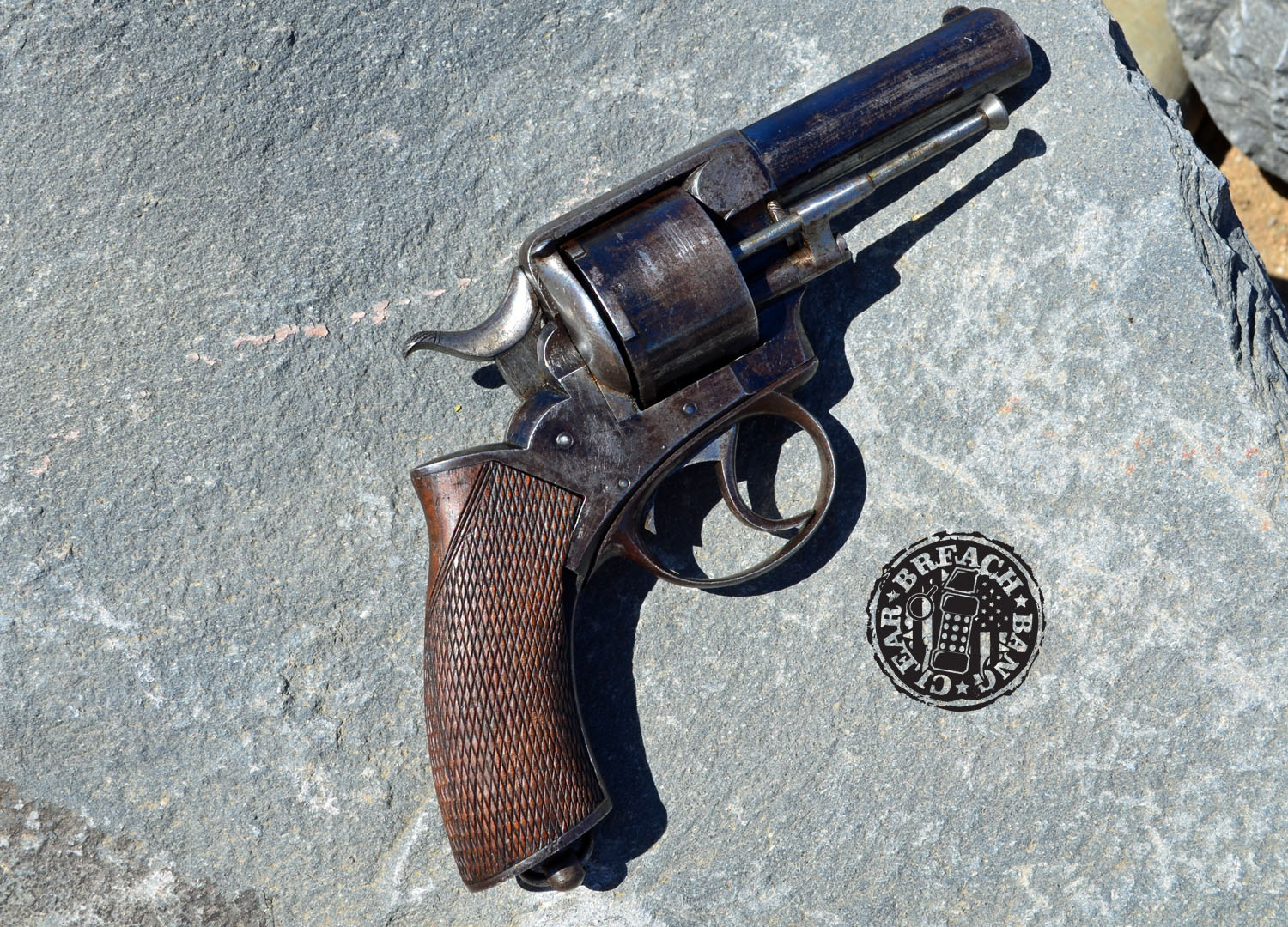

Serial number "93" is marked on the right side of the frame and on the left side grip frame.

"Winged bullet/W&S" trademark followed by "455.CORDITE." marked on the left side of the frame.

"WEBLEY FOSBERY AUTOMATIC" marked on the left of the top strap. WEBLEY & SON LONDON & BIRMINGHAM" marked on top of the barrel rib. Blade front sight and the rear sight integral to the top strap latch. This Model 1901 example utilizes William Whiting's patent cylinder retainer in which a left side mounted lever is pushed up for removal of the cylinder for maintenance, unlike the more commonly seen Model 1902 which would rid of the side mounted lever and utilize Whiting's improved cylinder catch with a button mounted on the top strap. The Fosbery design was reported to have been as fast, if not faster, than its magazine fed semi-automatic counterparts, and just as fast to reload utilizing the top break system with a six shot speed loader. This mechanism allows for a faster rate of fire compared to a standard double or single action revolver, while still maintaining the same responsive trigger pull of a single action. The top section of the revolver slides backwards, cocks the hammer, and simultaneously indexes the cylinder one position using zig-zag grooves. It is a true revolver with cartridges held in a six shot cylinder, but the cylinder is automatically turned by the force of recoil. Prior to Decemonly 263 serialized production examples of the Model 1901 are known to have been manufactured with a variety of design changes implemented in the earliest guns such as this one, wearing serial number 93. Approximately 1,000 Model 1901s were manufactured in total before the introduction of the Model 1902, which falls in the same continuous serial number range. Fosbery, which utilizes a novel "automatic" mechanism. This is a solid representative example of an early production two-digit number 93 Model 1901 Webley-Fosbery revolver as designed by Lt.


 0 kommentar(er)
0 kommentar(er)
